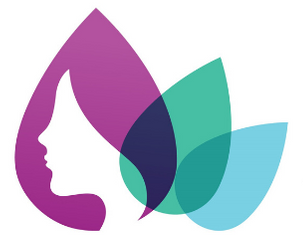|
"What Is Prenatal Depression?
Prenatal depression, also called perinatal depression, is depression experienced by women during pregnancy. Like postpartum depression, prenatal (or perinatal) depression isn’t just a feeling of sadness—mothers who experience this mental health disorder may also feel anxious and angry. You've likely heard of postpartum depression—and that's a good thing. The more that postpartum depression is talked about and understood, the more mothers will seek the help they need so that they can feel better and live full and healthy lives as new moms. But prenatal depression is a maternal mood disorder that hasn’t gotten nearly as much attention as it should. While prenatal depression can be treated, many expecting mothers don’t even know that it’s a “thing” and therefore don’t seek treatment for it. Many feel ashamed to even share how they are feeling. After all, you are supposed to be overjoyed and excited when you are expecting a baby, right? It’s easy to feel guilt and shame when you are feeling the exact opposite. Here’s what you should know about prenatal depression, including how common it is, what to look for in terms of symptoms, and most importantly, how to get help. How Common Is Prenatal Depression? Like postpartum depression, which impacts as many as 1 in 7 new moms, prenatal depression is actually quite common. According to a journal article by Maria Muzik, MD, and Stefana Borovska, published in Mental Health in Family Medicine, 13% of pregnant moms experience depression. As the authors note, perinatal depression (both prenatal and postpartum) is even more common among mothers facing adverse experiences, such as a history of depression or economic hardship. “The prevalence of perinatal depression is even higher in vulnerable groups with certain risk factors,” the authors explain. “Young, single mothers, experiencing complications, with a history of stress, loss or trauma are far more likely to succumb to depression. Furthermore, one study found that up to 51% of women who experience socioeconomic disadvantage also report depressive symptoms during pregnancy.” It's important to note prenatal depression doesn’t discriminate: You can experience it whether or not you have pre-existing risk factors. Always remember there is no shame in experiencing a serious bout of depression during pregnancy, and you are not alone. Causes Similar to postpartum depression, experts can’t pinpoint one particular cause of prenatal depression, but have hypothesized that it’s likely caused by a confluence of factors—a “perfect storm” of triggers that come to a head for some mothers during their pregnancies. Either way, it’s important to note that whatever caused your prenatal depression, it most certainly wasn’t your fault. There was nothing you did wrong, and you are not a bad mom (or going to be a bad mom). “Depression and anxiety during pregnancy or after birth don't happen because of something you do or don't do—they are medical conditions,” notes the Academy of American Pediatrics (AAP). “Although we don't fully understand the causes of these conditions, researchers think depression and anxiety during this time may result from a mix of physical, emotional, and environmental factors,” they add. Symptoms Prenatal depression manifests differently for every mom—you may even experience it differently from one pregnancy to another. It’s important to understand that anytime you feel overwhelmed by your emotions, unable to function in your day-to-day life, or just “off,” you should reach out to discuss your feelings with a trusted loved one or medical provider. Here are some of the most common symptoms of prenatal depression:
For more mental health resources, see our National Helpline Database."
0 Comments
By MGH Center for Women's Mental Health | June 22, 2021 "When a woman comes in for a consultation regarding the use of medications during pregnancy, we spend most of our time reviewing the potential risks of exposure to medications during pregnancy. However, we must also include a discussion of the effects of untreated psychiatric illness in the mother on the developing child, for there is a growing body of literature which demonstrates that what happens in utero, while the fetus is developing, may have effects on the child that persist into adulthood.
A number of recent studies have examined the brain anatomy of infants born to depressed mothers. Neuroimaging has revealed changes in connectivity between the amygdala and the prefrontal cortex (reviewed in Duan et al, 2019), and it is hypothesized that these alterations are responsible for the children’s increased vulnerability to anxiety and depression. In a recent study Sethnaa and colleagues add to this literature, using MRI to compare regional brain volumes in 31 3-to-6-month-old infants born to women with a diagnosis of major depressive disorder (MDD, confirmed using the SCID) and 33 infants born to women without a current or past psychiatric diagnosis. The study recruited women during the second and third trimesters of pregnancy from antenatal clinics and perinatal psychiatric services in South London. MRI assessments were conducted in infants between the ages of 3 and 6 months. Compared to infants born to non-depressed mothers, infants born to mothers with depression during pregnancy have larger subcortical grey matter volumes and smaller midbrain volumes. This finding persisted after adjusting for potential confounders, including medication use during pregnancy, postpartum depressive symptoms, and infant sex. These findings are consistent with other studies looking at different types of insults, such as hypoxia and substance use, suggesting that these subcortical structures are particularly susceptible to changes in the in utero environment. The authors note that this finding of an association between maternal antenatal depression and midbrain development is not surprising given the midbrain’s role in stress regulation." |
Archives
August 2023
Categories
All
|
|
SANDRA RODRIGUEZ-SIUTS, PH.D., LLC
9590 E Ironwood Square Drive, Suite 210 Scottsdale, AZ 85258 Phone: (480) 473-5411 Fax: (480) 436-6900 |
© Copyright 2023 Sandra Rodriguez-Siuts, Ph.D. - All Rights Reserved

 RSS Feed
RSS Feed




